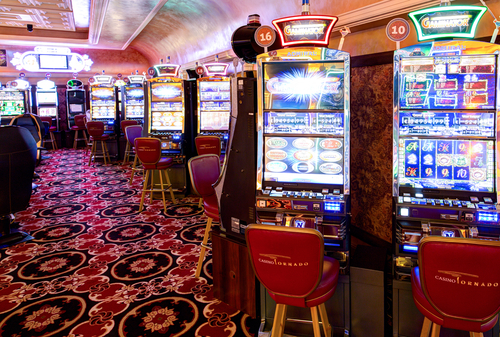
Gambling games have long captivated people’s attention, drawing participants into a world filled with fortune, planning, and the allure of excitement. Each experience is painstakingly crafted not just for entertainment, but also to inspire targeted emotional responses that keep participants involved and committed. Understanding the drives behind these designs reveals much about how human psychology plays a vital role in the gaming experience. kèo nhà cái
From the bright lights and vibrant sounds to the intricate layering of rules and incentives, casino games are designed to create an atmosphere of anticipation and eagerness. Game designers leverage mental cues to influence participant behavior, whether through the use of big prizes, near-miss scenarios, or community engagement. By examining these elements, we can better appreciate how casino games fulfill not just a desire for entertainment, but more profound psychological needs for excitement and hazard.
Comprehending Gamer Behavior
Casino games are crafted with a deep comprehension of player psychology, which is vital for drawing in and keeping players. The rush of the game, alongside the hope of winning, produces a strong draw. Game designers utilize elements like audio cues, dynamic graphics, and captivating gameplay to seize attention and elicit emotional responses. These sensory effects enhance the immersive experience, making players feel more attached in the game.
Another notable aspect of player behavior is the concept of risk/reward dynamics. Casino games often balance high-risk scenarios with the potential for considerable rewards, which can cause the occurrence known as near-miss effect. When players come within reach to winning, the brain produces dopamine, bolstering their behavior and prompting them to continue playing in pursuit of that fleeting win. This cycle of anticipation and disappointment plays a crucial role in how games are constructed and marketed.
Lastly, social elements also play a pivotal role in player behavior at casinos. Many games are designed to be played in teams or with other players, fostering a sense of togetherness and shared experience. The social interaction inherent in games like blackjack enhances enjoyment and can result in prolonged gaming periods. Designers capitalize on this by creating environments that prompt players to stay, connect, and return, making the overall casino experience more inviting.
The Role of Imagery and Sound
Visuals and audio play a vital role in elevating the gambler’s experience within gambling games. Designers utilize vibrant colors, striking graphics, and captivating animations to attract players’ attention and maintain their focus. The use of themes, such as adventure or luxury, helps create an enthralling atmosphere that transports players into another world. By appealing to the senses, these elements contribute to a intensified emotional response, encouraging players to engage more deeply with the games.
Sound design is equally important in enhancing the overall experience of gambling games. The combination of background music, sound effects for successful combinations, and environmental noises creates an auditory landscape that keeps players enthralled. Audio cues associated with victories, such as ringing bells or celebratory music, evoke feelings of thrill and reward, encouraging players to continue playing. These audio cues are strategically placed to enhance the thrill of the game and create a more immersive experience.
Moreover, the synchronization of visuals and sound is crucial for reinforcing the game’s overall concept and mood. Each element should align harmoniously to create a unified experience that pulls players in. The effective use of this synergy not only improves user satisfaction but also increases the likelihood of return play, as players become more invested in the immersive world that the casino games offer. This thoughtful combination of visuals and audio ultimately enhances player involvement and loyalty.
Incentive Systems and Participation
The development of gambling experiences greatly depends on incentive structures to ensure participants involved and returning for more. These systems are based in psychological principles that exploit human behavior and desire. Players are often motivated by the excitement of success, which is reinforced by instant feedback through the game’s mechanics. This instant gratification not just improves the overall experience but also cultivates a sense of achievement, encouraging players to keep playing in hopes of greater gains.
Gaming establishments implement various reward structures, such as jackpots, extra rewards, and multipliers, to captivate players. These features create a level of excitement that sustains interest. Additionally, the randomness of outcomes plays a significant role in keeping interest. The intermittent reinforcement schedule, where wins are unpredictable but occur often enough, keeps players on edge and motivated to keep playing. This loop of anticipation and anticipation is foundational to the effectiveness of casino games.
Moreover, community aspects, such as tournaments and multiplayer features, boost the participation factor by tapping into the desire to compete of players. The shared experience of playing with others can intensify the excitement of success and create a sense of community within the casino. By integrating these social dynamics with effective incentive structures, gambling experiences not only provide entertainment but also foster a stronger connection among participants, solidifying their commitment to the gaming experience.
